Table of Contents Show
An electric RV awning can create shade or an instant escape from the rain.
Whether camping in the mountains or deserts, RV awnings can come in handy.
Most modern RVs roll out of factories with electric ones.
However, sometimes we think, “If it ain’t broke, don’t fix it.” Manual RV awnings have been dependable for decades.
Today, we’ll share five reasons why we think you should avoid electric RV awnings. When you finish reading this, you may opt to replace yours with a manual one when it breaks.
Let’s get started.
How Do Electric RV Awnings Work?
Electric RV awnings work by using electricity to extend and retract the awning.
You can roll in and out your awnings at the click of a button.
It functions by using an integrated tube motor to extend and retract it.
Generally, electric RV awnings use 12 Volt DC power.
That means that most awnings retract using the onboard battery.
However, if you have a dead battery and no power source, you can’t use it.
Differences Between Manual and Electrical Awnings
A manual awning requires the user to crank a handle to extend and retract the awning.
The user completely controls the speed and distance.
However, an electrical RV awning requires the user to push a button that electrically extends and retracts it at a predetermined speed.
Modern electrical awnings have smart technology that allows RVers to extend and retract them through an app on their phone.
This means no more having to get out of your camping chair to create shade or seek shelter.
Can You Put an Electric Awning on a Camper?
If your camper didn’t come with an electric awning, you could install one on it.
You’ll have plenty of options available, and with some DIY skills, your next weekend project might mean adding one to your camper.
You’ll want to keep in mind the dimensions of your rig and how you’ll mount it.
This will likely require drilling into your rig, which many RVers refuse to do.
You’ll also need to consider how you plan to seal unused holes left from the manual one.
Adding an electric awning onto your camper will require an extra set of hands.
So make sure you grab someone to make this project as smooth and efficient as possible.
Pro Tip: While we think you should avoid electric RV awnings, there are RV awning options we do recommend! Here’s How to Find a Camper Awning That Doesn’t Suck
5 Reasons You Should Avoid Electric RV Awnings
While an electric RV awning is more convenient, they do have flaws.
As with all modern advancements, especially with electronics, things can go wrong.
Before you click that add to cart button, you might want to consider a few things first. Let’s take a look.
1. They’re Expensive to Set Up or Replace
If your RV didn’t already come with an electric awning, it isn’t going to be cheap to install one.
An electric one can run up to $3,500 for parts alone.
Add in $100 to $200 per hour for a professional installation, and it’s a tough pill to swallow.
The bigger the awning, the more it’ll cost.
If for some reason, yours needs replacing, it will have you digging deep to pay for it.
Many RVers with broken awnings will often delay repairs as long as possible to avoid the costly expense of repairing them.
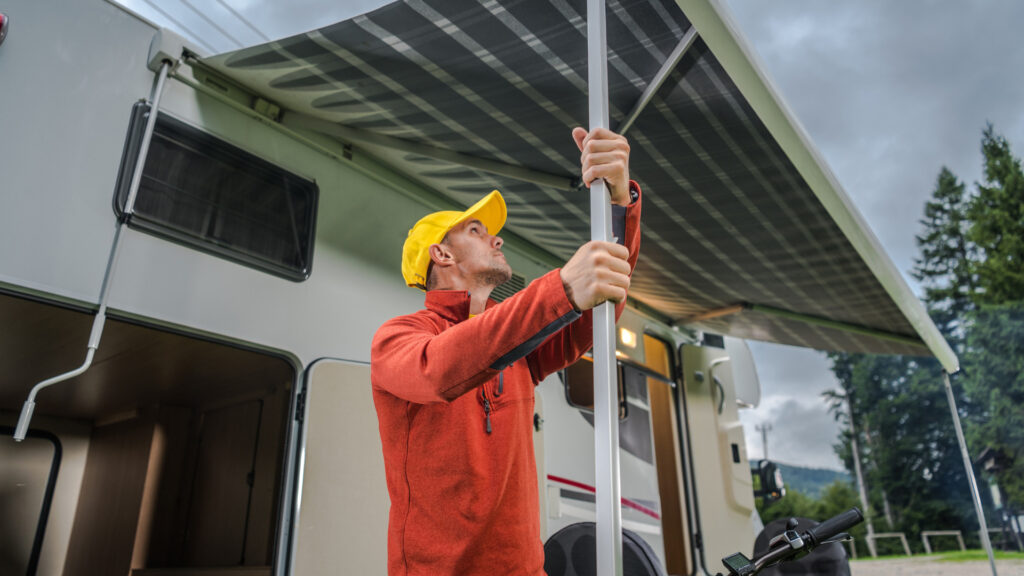
2. Replacement Parts Cost More
If your electric RV awning gets damaged, you must fix or replace it.
Even if it doesn’t need a complete replacement, fixing it will cost a pretty penny.
Electric components almost always cost more than their manual counterparts.
As we previously said, it’s not uncommon to see RVers with broken awnings just dealing with it.
They’ll deal with it if they can rig their shades to not cause issues.
Even replacing a single arm or fabric can cost hundreds of dollars.
Pro Tip: Don’t Panic! How To Repair Your RV Awning Yourself
3. The Motor Can Be Damaged By Winds
The motors on an electric RV awning can be very sensitive.
This means you run the risk of damage due to wind.
The damage often happens when RVers retract their awnings due to high winds.
Wind gusts can cause resistance to the motors and any sensitive gears.
Damaging these gears and other delicate parts that make up the motor can render it useless.
If that’s the case, you’ll likely want to avoid using it once you can fully retract it.
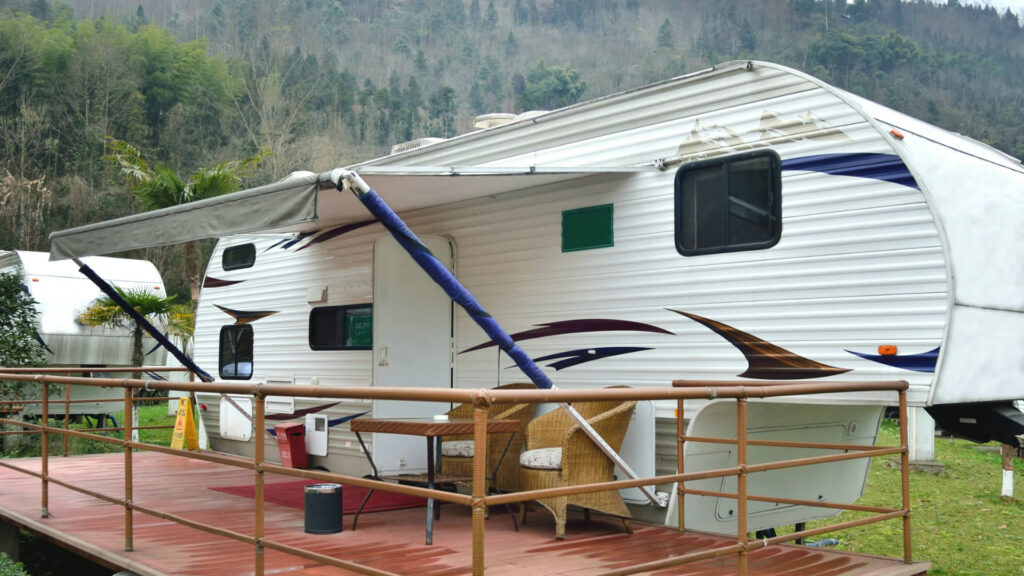
4. Some Aren’t as Sturdy as Manual Awnings
We all know that wind and awnings don’t mix well.
Because the arms need to be relatively lightweight, they don’t come as sturdy as manual ones.
This means you need to use extra caution in the wind or rain.
Depending on how often you use your RV awning, the added stability of a manual is worth the extra effort to extend and retract it yourself.
If you’re a weekender, it will only require you to do it a dozen times each year or so.
Pro Tip: How to Safely Clean an RV Awning
5. Sensors May Have Trouble Working
Manufacturers have begun installing sensors on electric RV awnings to help reduce damage.
These sensors detect rain and wind and often automatically retract themselves.
However, they’re not perfect and, in some cases, even cause more damage.
Many RVers slant their awnings to avoid water collecting on top.
However, you have to level the awnings before bringing them in.
If your unit has these sensors, they may start retracting while unlevel and cause bends and twists in the metal components.
Find Out: Can You Leave Your RV Awning Out in the Rain?
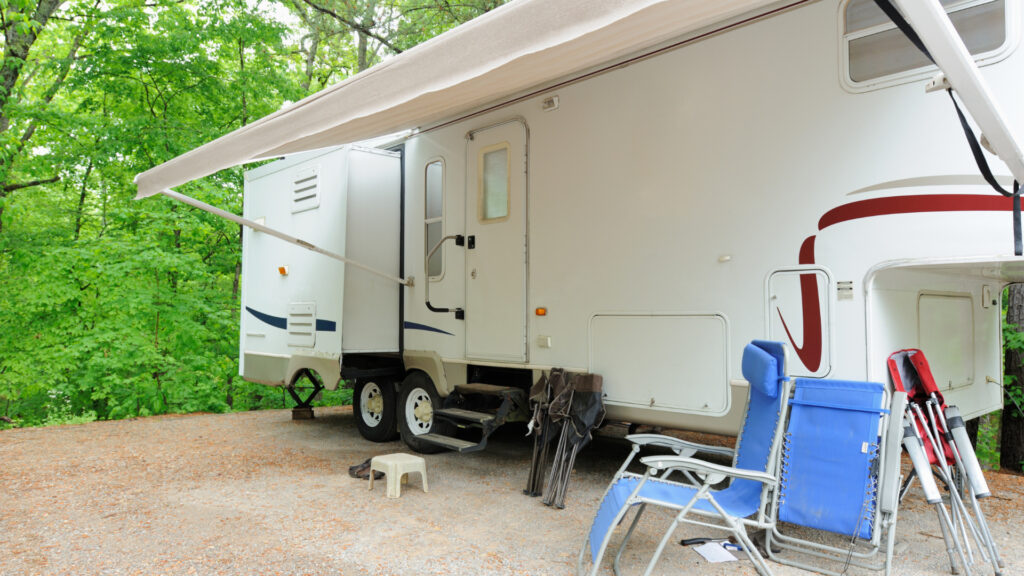
Are Electric Awnings Easy to Install?
If you have decent DIY skills and experience, you can install an electric awning yourself.
However, most instances require a tremendous amount of space, at least one extra set of hands, and electrical knowledge.
You’ll need to run wiring from a power source to your shade.
Electrical issues can be very dangerous. If you don’t know how to do it, you should hire a professional to install your electric awning.
It’s not worth saving a few bucks by sacrificing the safety of your RV or anyone camping in it.
Keep in Mind: There are many things you can DIY with your RV, but should you? Let’s see if you should bring in a professional for a 5th Wheel Hitch Installation
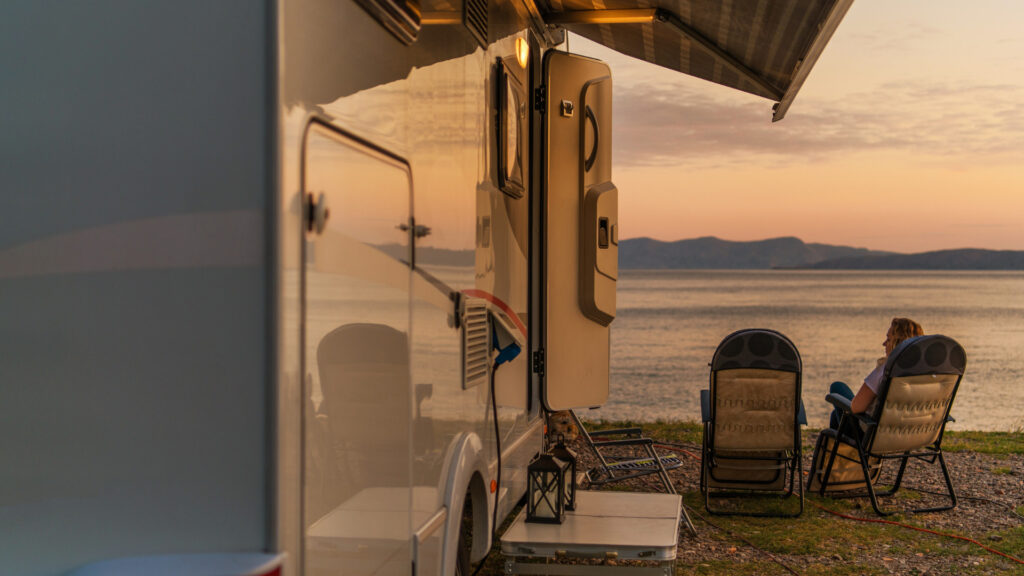
Is an Electric RV Awning Worth It?
An electric RV awning is a fantastic and very convenient feature on an RV.
It makes it easy to quickly and easily extend or retract your awning.
You can create a comfortable space to sit outside in seconds.
However, they’re only great when they work.
When you need to repair or replace them, you’ll feel less than excited about the expense.
It will often have you questioning whether or not it’s worth having on your rig. Considering the risks of damage, the high costs, and the difficulties to install or repair, you can decide if the convenience is worth it for you.





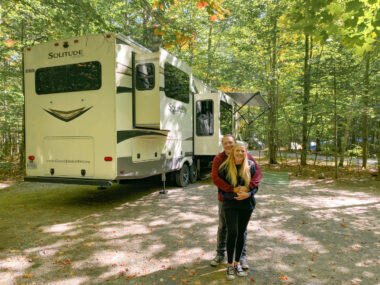

I hate my electric awning. It drains my battery. I had it replaced under warranty because it was retracting very slowly and you can hear the motors struggling. New motors. Same problem. Batteries are fine. I would love a manual awning. Awning is lippert. 2 years old.